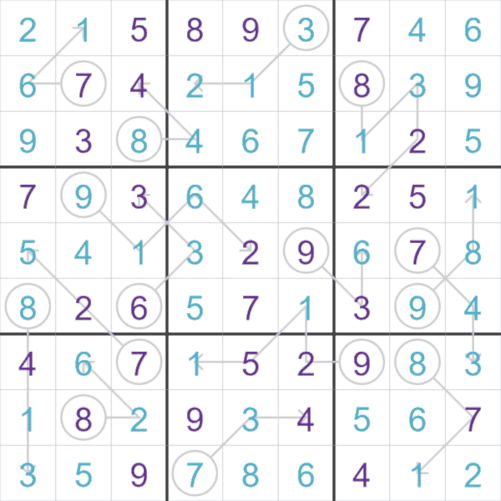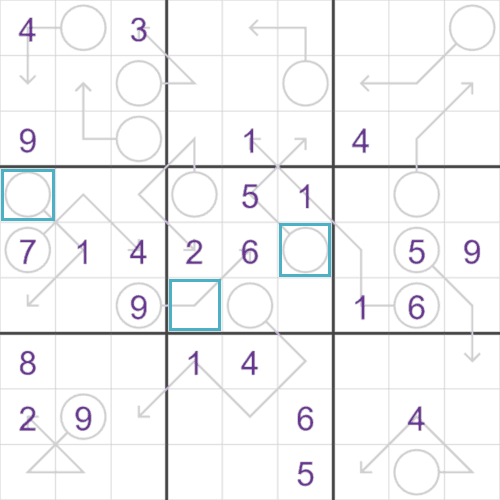This is a starting grid. I have highlighted 3 cells that we can fill in.
Let's start with the middle cell. This cell is on an arrow stalk that needs a total of 9, and there is
one other cell already filled in on the stalk with a 6. That means this highlighted cell must be 3,
to give us the required total of 9.
Now look at the cell on the right-hand side. Most of this row is actually already filled in - the only
missing numbers are 3 and 8. This cell is also the total cell for an arrow, and we already have a '5'
on the stalk. 3 would be too small here, so this cell must be an 8.
The arrow total cells are normally larger numbers - they have to be. It's always a good idea when
starting a new puzzle to look at the total cells quite early on. In the highlighted cell on the left
side of the puzzle, we can already eliminate 1, 2, 4, 5, 7, 8, and 9 from the possible numbers, leaving
only 3 and 6 for this total cell. If this cell was a 3, then that would mean the missing cell on the
stalk would have to be a 2, but we already have a 2 in this column, so that can't be the case. The only
option left is 6.
 Arrow Sudoku leaderboard
Arrow Sudoku leaderboard

